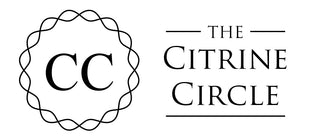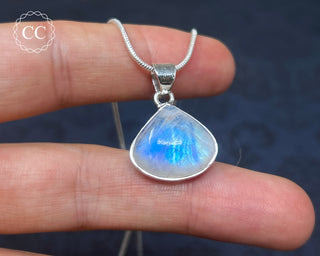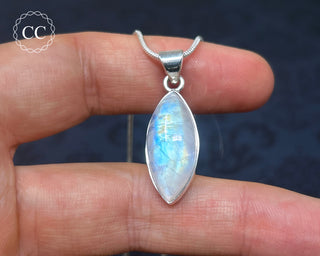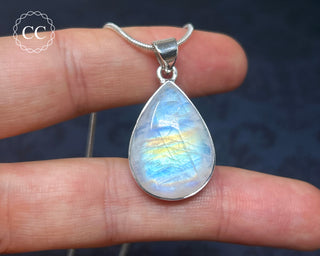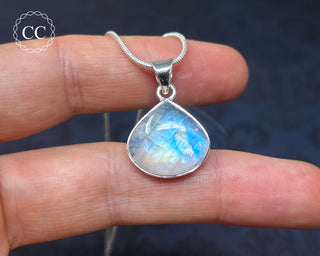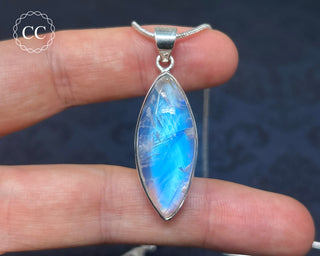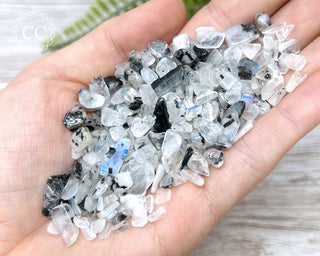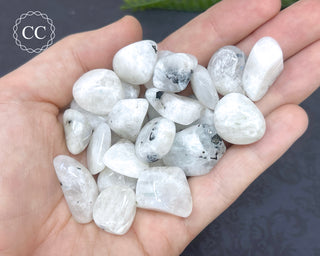Rainbow Moonstone
Rainbow Moonstone is a white feldspar that is actually a variety of Labradorite rather than Moonstone. It often has flashes of colour in it, usually blues but it can also be found in more unusual colours include golds, purples and oranges. According to Hindu legend, Moonstone was formed from solidified moonbeams, and is embedded in the forehead of the god Ganesh, god of the moon. Another ancient Vedic legend says that during the battle between the gods Vishnu and Bali, when Vishnu destroyed Bali's body, it fell to earth and the different parts became gemstones - with his eyes becoming moonstone. They still regard it as an incredibly sacred stone - it was not allowed to be displayed for sale unless it was shown on a yellow cloth (a sacred colour). They have many rituals and legends surrounding it, including that if you put it in your mouth during the full moon, you would see your future. The Romans believed that it was formed from drops of moonlight, and the light inside was the goddess of the moon, Diana. They thought the stone was an aphrodisiac, and that if two people wore it during a full moon they would fall in love. Ancient Asian culture believed that the light inside the crystal is a living Spirit, and that it would attract great abundance. They believed that the most beautiful flashy moonstones would be brought in with the tides every 21 years.
Rainbow Moonstone promotes a happy home and is a good luck charm that brings wisdom and insight. It can increase creativity and inspire passion, while also helping with change, new beginnings, and endings. Popular for centuries as a travellers' protection talisman, this crystal has a soothing and calming effect on the emotions and inner self, exuding calm, control, balance, and confidence. Rainbow Moonstone can help combat cycles and repeated patterns and boost fertility and reproductive health, helping to combat mood swings
| Alternative Names | White Labradorite |
| Colour | White, Rainbow |
| Hardness | 6 - 6.5 |
| Crystal system | Triclinic |
| Streak | White |
| Lustre | Vitreous |
| Main Locations | India, Sri Lanka |
| Chakra | Third Eye, Crown |
| Zodiac | Cancer |
| Numerology | 4 |
| Planetary | Moon |
| Element | Water |
You’re viewing 1-7 of 7 products

